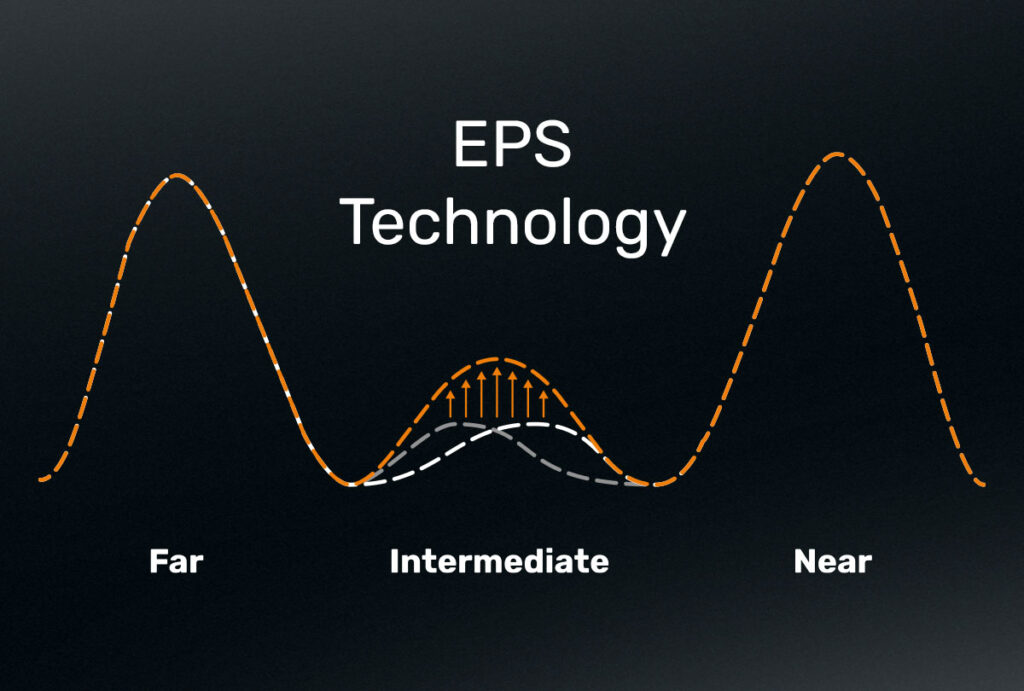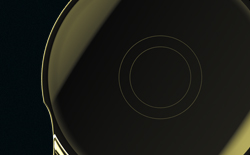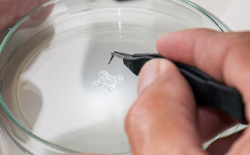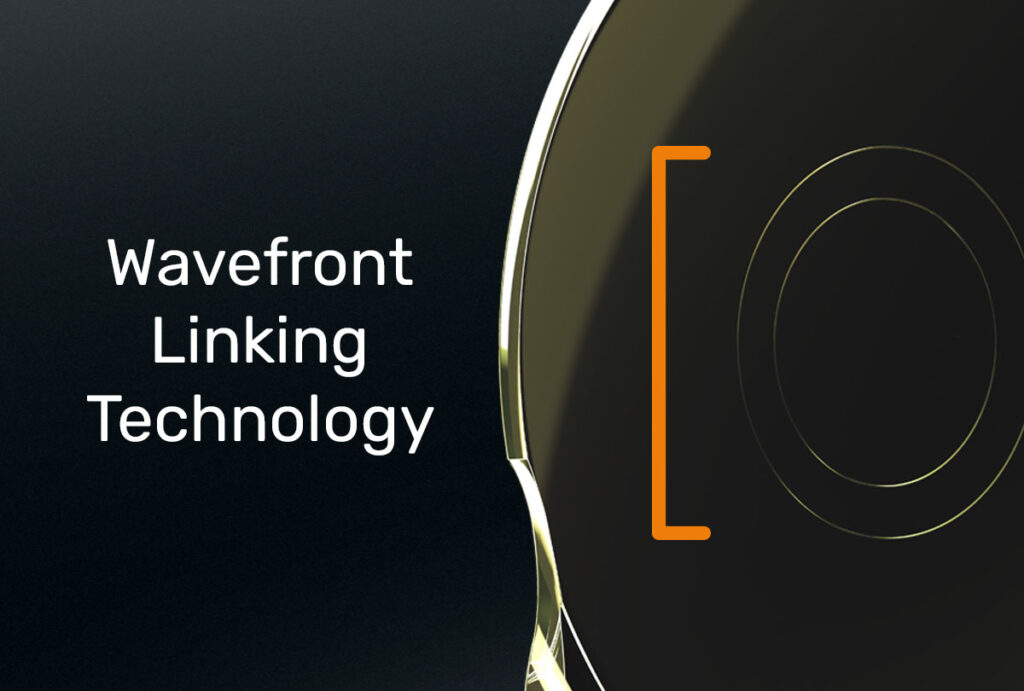Elevated Phase Shift Technology
Elevated phase shift technology (EPS technology) is an innovative optical design for creating trifocality that makes the most efficient use of light energy, thereby optimizing image quality for presbyopic and cataract patients.

EPS stands for outstanding trifocal performance with a minimized level of interference.
How does EPS technology work?
EPS technology uses the physical principle of positive interference. When light waves hit a diffractive structure, they change their waveform. As a result, individual waves can overlap, causing their amplitudes to change. If two waves overlap in such a way that their crests lie on top of each other, the amplitudes add up and the intensity increases. This is a positive (constructive) interference.
Third focus point due to positive interference
The EPS optical design results in an increased phase shift (EPS) of the light waves that hit the diffractive area for far and the diffractive area for near. The resulting positive interference creates a third focus point for the intermediate range without the need for additional diffractive stages (Fig. 1). This makes it possible for 75 percent of the lens surface to be refractive instead of diffractive(1).

(Fig. 1) Schematic representation of the use of constructive interference to generate an intermediate peak using EPS technology.
Fewer steps – less visual interference
Diffractive steps cause light scattering and light loss. The more diffractive steps there are, the greater the effect and the higher the risk of undesirable interference effects such as halos and glare. Because IOLs with EPS technology create a focal zone by means of positive interference, they achieve outstanding optical performance with significantly fewer diffractive steps than other trifocal IOLs. The Basis Z trifocal has only 8 diffractive steps, the trifocal AddOn® has 4. Comparable lenses have 14 or more integrated diffractive steps. This reduces visual disturbances and increases visual comfort(1).
Improved contrast vision with EPS technology
The number of diffractive steps also influences contrast vision due to light scattering and light loss. A few diffractive steps are also advantageous here. The optimized light distribution thanks to EPS technology also improves optical performance by increasing contrast sensitivity.(1)
Evidence-based in the capsular bag and sulcus
Trifocal IOLs with EPS technology achieve excellent optical performance from near to far, as can be seen here in the monocular defocus curve for the trifocal AddOn sulcus lens (Fig. 2).(2)

(Fig. 2) The defocus curve of the add-on IOL shows better visual acuity in the medium and near range compared to the trifocal capsular bag intraocular lens. The depth of field is identical for all implanted lenses. Notes: (A) Monocular defocus curve (n=12 eyes) with the add-on IOL compared to the binocular defocus curve (n=20 eyes) of a trifocal capsular bag intraocular lens. (B) Comparison of DOF curves obtained with the add-on IOL and the capsular bag intraocular lens. *p<0,05; **p<0,01; ***p<0,001. Abbreviations: logMAR, tenth logarithm of the minimum angular resolution; IOL, intraocular lens; DOF, depth of field; n, number of cases; p, probability value.
In addition to the optical performance, the satisfaction of patients who already had a monofocal IOL implanted in the capsular bag and who subsequently had a trifocal AddOn sulcus lens with EPS technology implanted was recorded as part of a study. Compared to the situation with the monofocal IOL alone, the performance for near vision, independence and social functioning increased after implantation of the trifocal AddOn. There were no negative changes in color perception, contrast sensitivity, optical performance for distance and driving (Fig. 3).(3)

(Fig. 3) a) Binocular defocus curve of 100 eyes after 12 and 24 months follow-up examination
b) Binocular defocus curve of 66 eyes after 3 months of follow-up examination
How do you benefit from EPS as an ophthalmologist?
Thanks to EPS technology, you can offer your cataract and presbyopia patients the benefits of a trifocalIOL with reduced visual interference.(1) EPS technology is available for the capsular bag and the sulcus. Precisely because EPS technology is integrated into our trifocal AddOn sulcus lens, you are even more flexible when it comes to presbyopia correction. It is atraumatically reversible at any time and enables high precision refraction.(4,5)
Benefits of EPS technology for your patients
For your patients, IOLs with EPS technology offer the chance of a life independent of glasses with a low risk of undesirable disturbing effects such as halos and glare.(1–3) The advantages of EPS technology for your patients at a glance:
- Excellent vision quality at a distance, intermediate range and close-up
- High chance of independence from glasses
- Reduced optical interference effects such as halos and glare, which are particularly undesirable when driving at night
- Good contrast sensitivity
- After implantation of a monofocal IOL in the capsular bag, a trifocal AddOn with EPS technology can also be used to upgrade the quality of vision and visual comfort.
References
(1) Presbyopia Correcting IOLs for Phakic & Pseudophakic Eyes. EPS Technology: A Special Concept with Multiple Applications. Eurotimes Suppl. February 2020. (2) Palomino-Bautista, C.; Sánchez-Jean, R.; Carmona Gonzalez, D.; Romero Domínguez, M.; Castillo Gómez, A. Spectacle Independence for Pseudophakic Patients – Experience with a Trifocal Supplementary Add-on Intraocular Lens. Clin. Ophthalmol. Auckl. NZ 2020, 14, 1043–1054. https://doi.org/10.2147/OPTH.S238553. (3) Albayrak, S.; Comba, Ö. B.; Karakaya, M. Visual Performance and Patient Satisfaction Following the Implantation of a Novel Trifocal Supplementary Intraocular Lens. Eur. J. Ophthalmol. 2021, 31 (5), 2346–2352. https://doi.org/10.1177/1120672120969042. (4) Khoramnia, R.; Baur, I. D.; Yan, W.; Łabuz, G.; Auffarth, G. U. Comparison of a Presbyopia-Correcting Supplementary Intraocular Lens Combination and a Capsular-Bag Lens: An In Vitro Study. Diagnostics 2023, 13 (8), 1482. https://doi.org/10.3390/diagnostics13081482. (5) Harrisberg, B. P.; Chua, A. W.; Chua, M. J.; Taher, A. Comparison of Primary Duet Lens Procedures: In-The-Bag Monofocal with Sulcus Multifocal, and Standard Single Multifocal Lens for Cataract Surgery. Clin. Ophthalmol. Auckl. NZ 2023, 17, 273–282. https://doi.org/10.2147/OPTH.S396472.

 IOL-Experience
IOL-Experience Technologies
Technologies IOL calculators
IOL calculators Service & handling
Service & handling Sustainability
Sustainability Congresses and events
Congresses and events Download Center
Download Center